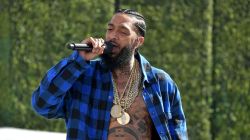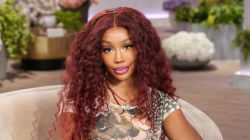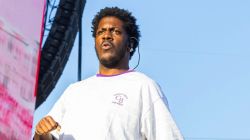“I want to be somewhat of an ambassador, internationally, for my generation. Not just for young black males, but for my generation as a whole.” – Tupac Shakur
Few Hip Hop artists have aspired to be the kind of spokesman Tupac Shakur was becoming when he was murdered in September 1996. It is easy to understand why. The ambitions and adversities of millions are a heavy burden for anyone to carry, let alone someone as young as the typical rap superstar. For nearly 20 years, listeners have waited in vain for someone to pick up the baton Tupac left behind in Las Vegas. On March 15, 2015, one member of Hip Hop’s vanguard not only grabbed that baton, he took off running with it when he released what may become the most important rap album of this decade. The artist? Kendrick Lamar. The album? To Pimp a Butterfly.
As fans and journalists have discovered in the days following its release, To Pimp a Butterfly is an emotionally exhausting and thought-provoking concept album that only reveals itself fully after detailed and repeated listening sessions. Its structure is complex and is founded upon three sources. The first is a story entitled “Another Nigga” which is told, one new line at a time, over the course of the album and sets forth Kendrick’s post-fame transformation from disillusioned star to self-assured messenger. The second source is a poem, “To Pimp a Butterfly,” which tells a similar tale but does so in metaphorical, rather than literal, fashion. The third source ends the album and is an interview focused on the future. This interview’s prophetical bent is ironic because the person being questioned by Kendrick is none other than Tupac Shakur, who, as most are now willing to admit, has been dead for almost nineteen years.
Tupac As Hip Hop’s Patron Saint
Why would Kendrick Lamar choose Tupac of all rap legends to converse with at the end of this masterpiece? The reasons are numerous. Tupac was the type of artist who naturally combined the most important elements of Hip Hop, indeed of life itself. His music could be celebratory, depressing, personal, political, hard, sensitive, or insightful, often all at the same time. As Public Enemy’s Chuck D recently told Rolling Stone, Tupac “was able to touch souls like no other MC.” He was a provocateur both inside and outside the recording booth: Always in the mix, inflaming the media, and expounding on issues that were important to his community. Just days before being murdered, Tupac was at a rally in Los Angeles, speaking out against a California proposition intended to prohibit affirmative action. Tupac was dangerous to the establishment because he used the power of his voice, both on wax and in reality, to fight the injustices he observed around him. As Kendrick opines at the album’s conclusion, Tupac could therefore “relate to” Butterfly’s underlying story.
The use of Tupac’s disembodied voice at the conclusion of To Pimp a Butterfly was also dictated by reasons personal to Kendrick, who has been inspired by Tupac since he was a child. When Kendrick was just eight years old, he and his father saw Tupac and Dr. Dre filming the “California Love (Remix)” music video at the Compton Fashion Center (where Kendrick recently shot a video for “King Kunta”). At that shoot, a motorcycle officer nearly struck Tupac’s black Rolls-Royce Corniche, leading Tupac to lash out, “Yo, what is you doing? This is a $100,000 car. You in front of my people.” Tupac’s confidence made a powerful impression on Kendrick. It was then that Kendrick decided he too wanted to be an artist. Tupac’s guidance did not cease upon his death. Years later, on the night after Kendrick’s mother told him that his and Tupac’s birthdays were days apart, Tupac appeared to Kendrick in a dream, commanding Kendrick to keep his music alive. Shortly thereafter, Kendrick recorded Section.80, his most socially conscious album until To Pimp a Butterfly.
One year after Section.80, Kendrick released his critically-acclaimed major label debut, Good Kid, m.A.A.d City. An Illmatic for the millennial generation, Good Kid is a birds-eye view of Kendrick’s adolescence on the streets of Compton. In contrast to Tupac’s seminal albums, Good Kid casts Kendrick more as an observer than as a protagonist. Like Nas, Kendrick paints a beautifully detailed portrait of life in his hood. After eleven tracks of masterful emceeing, Good Kid ends with “Compton,” an ode to the Hub City, the birthplace of N.W.A, DJ Quik, et al. On that song, Kendrick enters the world stage alongside his musical mentor, Dr. Dre, as a talk box harkens back to Roger Troutman’s timeless contribution to “California Love,” the song which began Kendrick’s musical journey.
To Pimp a Butterfly opens three years later with “Wesley’s Theory,” a track that once again features Dr. Dre, who brings along George Clinton, the g-funk era’s greatest influence. Kendrick is a different person at the opening of Butterfly than he was at the end of Good Kid. He is a caterpillar: Consuming everything in sight, egocentric enough to compare himself to Alex Haley’s Kunta Kinte, and destined to bring the West Coast back to Hip Hop prominence. Fortune and fame are not all that they are cracked up to be, however. On the album’s opening tracks, Kendrick sounds lost, beset on all sides by the evils of Uncle Sam and Lucifer: Drugs, alcohol, empty sex, depression, and self-doubt (all of which are common themes running through Tupac’s catalogue). Kendrick hits bottom on “u,” one of the most emotionally naked songs heard in Hip Hop since the release of “Dear Mama” twenty years ago.
After “U” And Moving Toward The Light
Kendrick begins following his path toward enlightenment on the Pharrell Williams and Sounwave produced song, “Alright.” Though tempted by Satan, he learns to “keep [his] head up high” and realizes he needs to “write ‘til I’m right with God.” He refuses to sell his soul and understands that he must heed the advice his mother gave him on the Good Kid song, “Real,” by returning home to Compton (the chrysalis).
Kendrick’s arrival brings a shift in perspective. While the tracks in this section of the album (“Momma” through “i”) evidence much self-discovery, Kendrick’s subject matter is more worldly than it is on the rest of To Pimp a Butterfly. He promises “to advocate for” a youth he meets on “Momma,” navigates “Hood Politics,” receives advice from Tupac through his mother (“You ain’t gotta lie to kick it”), and turns a symbol of oppression into a symbol of beauty on “Complexion (A Zulu Love)” (“I made a flower for you outta cotton just to chill with you,” reminding Tupac fans of “the rose that grew through a crack in the concrete”). Kendrick also confronts an accusation frequently tossed at Tupac during his lifetime, the charge of hypocrisy, on the fiery “The Blacker the Berry” (track 13, a number that is meaningful to the abolition of slavery and Tupac lore). He even travels thousands of miles and into the past, a la Marlow in Conrad’s Heart of Darkness, to Africa, the home of Nelson Mandela and the original home of African-American (and human) ancestry.
It is not until the penultimate song that Kendrick actualizes all that he has learned over the course of the album and realizes that the butterfly he has become and the caterpillar he once was are one and the same being. A live version of “i” replaces the studio single, permitting a riveting conclusion where Kendrick uses the power of the spoken word to quell a fight brewing in the audience. Kendrick stops the music and asks the crowd, “how many niggas we done lost?” before imploring the people to stop being victims and make time rather than waste time. He also substitutes the word Negus (a word used to describe royalty in Ethiopia) for nigga, taking Tupac’s Never Ignorant Getting Goals Accomplished definition of “N.I.G.G.A.” a step further.
To Pimp a Butterfly concludes with “Mortal Man,” a contemplative track reminiscent of “Testify,” a Nas song off of the similarly themed Untitled album (which was released shortly before Barack Obama’s historic 2008 election and closes with a song that samples Tupac’s oft-quoted bars, “and though it seems heaven sent / we ain’t ready, to have a black President”). After “Mortal Man” fades away, Kendrick finishes reading “Another Nigga” and it is revealed that he has been speaking to his musical father, the ghost of Tupac Shakur, all along. At that point, Kendrick reprises his Good Kid, m.A.A.d. City role of a Hip Hop journalist, probing Tupac for a glimpse into America’s future. “The poor people is gonna open up this whole world and swallow up the rich people ‘cause the rich people gonna be so fat, they gonna be so appetizing… there might be some cannibalism out this mutha,” Tupac explains. Their conversation returns to various themes Kendrick illustrates throughout the album: The importance of honesty, the need to resist oppression, and, finally, a warning from Tupac that “it’s gonna be like Nat Turner, 1831, up in this motherfucker” if African-American lives are not respected. Finally, Kendrick reads the “Butterfly” poem to Tupac and seeks his perspective. Tupac does not respond, cannot respond. He is gone; the album ends with Kendrick calling out, “‘Pac. ‘Pac. ‘Pac.” Kendrick is on his own.
What is next for Kendrick Lamar? Will he remain introverted and revert back to the chrysalis? Or will he fly further than his peers, baton firmly grasped in hand, and become the ambassador Tupac envisioned so long ago? Such questions, like the last Kendrick posed to Tupac, remain unanswered. One thing is certain: Kendrick Lamar is one of, if not the, most important artists working in Hip Hop music today.
Michael Namikas is a writer and longtime Hip Hop listener who practiced law in a past life and is currently writing a listener’s guide devoted to the music of Tupac Shakur, the first volume of which will be published in the first quarter of 2016. He frequently posts on Reddit as /u/Mikeaveli2682 and can be followed on Twitter @Mikeaveli2682.









Great write-up, Mike. Smart move working with him, HHDX.
Wow grerat read, amazing article, good work man!
Great read.
Beautifully constructed editorial. Go out and support this album!
Another insightful article Mike. Always interested to hear what you have to say about anything even remotely related to 2Pac.
Great article…the album is perfect but you know ppl will say otherwise.
Awesome insight. Awesome writing. Awesome read.
all of these comments below sound the same… either way I enjoyed the editorial
Yeah, they’re all me. Just kidding. Glad you enjoyed the piece. Check out my website, where I’ll be updating regarding my book when it gets closer to release: http://www.michaelnamikas.com
Great article! Amazing writer.
Excellent write up, thank you Mike
Mediocre article on a trash website
trash website? but u on it so u trash too lol
Great read, thanks for this.
great read, would love to see more from you.
Great Article
Well done.
Another insanely great read from Mr. Namikas. I don’t know enough about Kendrick’s music to agree or disagree with the assertions (still haven’t even listened to any of the new album). But I know Mikeaveli doesn’t take a 2pac comparison lightly so I will be buying (and running on repeat) To Pimp A Butterfly. My first Kendrick experience was Swimming Pools and I guess I judged him incorrectly. I have been hearing good things but not until this post was I ever compelled enough to really listen to what Kendrick has to say. Excited to see what I find. Thanks for the post
Yeah, Swimming Pools sounds like a radio song like everything else, but most people singing it don’t even get the message. The exact opposite of the chorus.
Nah, this ain’t spam at all ;o)
STOP THE DICKKKRIDDING PLEASE FOR GODS SAKE
Great piece. I’m writing about to Pimp a Butterfly for a CommCrit class. I definitely will be citing you Mike. I’m excited for The Book to come out; keep up the good work.
Man this album was disappointing.
Kendrick has so many dickriders, at this point he could release ANYTHING and if you don’t think it’s amazing people will just be like “YOU JUST DON’T GET IT”
Well a majority of people love the album including myself. It just ddoesn’t relate to u.
Mmm … The obsession with Tupac (the troublesome gemini ballerina) is astonishing.
I find it amazing how many people still blindly lick this actor’s dirty feet.
Now he’s called a ‘Saint’. The same ‘Saint’ that inspired a generation to murder and end up in jail, the same ‘Saint’ that referred to all women as bitches and fuel his jilted generation with overzealous hissery.
A Saint … Really???
Even calling him a ‘Patron Saint of his craft’ is just pushing the cock-suckery to another level Mr. Author and this comment also goes to Kendrick.
your entire comment reads as follows: ‘waaaaaaaaahhh’
Completely agree, Tupac is so overrated it’s disgusting. There are way better rappers than Tupac. He also wasn’t a saint, he was Thug loser.
^You’re probably a bitter white person who hates rap.
Great written article. Album is great,with tupac added touch makes it even more powerful.
SMFH you know that song is about ALOT more than 2pac?
Still yall niggaz be talking bout only 1 thing, 2pac.
Shame on you fucktards, yall should write editorials about Michael Jackson and Mandela being mentioned in songs.
What the FUCK is wrong with you?
Lol “Few Hip HoP” you lost me there. More like most hip hop artist since pac want to be pac one way or another
I don’t know what’s worse, the Kendrick Lamar ddickriding, or the Tupac dickriding……SMDH
Pac is cool, but Kendriick overrated as hell…
yuza bitch ass niqqa
kendrick is not overrated, he’s underrated, motherfucker!!
2pac is rap god, some of yall need to watch yo mouths…
Tupac was a actor and a ballerina. Get a life…
rap god my ass.
he’s as much as a rap god as eminem is a black dude.
fuck dis nigga Pac yall talking bout.
Many thanks to you Michael for sharing this insightful read on Kendrick’s latest album. It really adds some layers of depth to consider as I continue to enjoy rhis album. Great stuff again!
Well written article.A Real and good work have been made ! I’ve heard of the featuring with Pac and i kinda liked it! Well done man keep it that way.